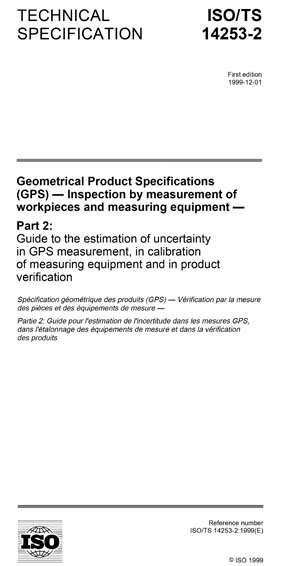Historical
ISO/TS 14253-2:1999
Geometrical Product Specifications (GPS) -- Inspection by measurement of workpieces and measuring equipment -- Part 2: Guide to the estimation of uncertainty in GPS measurement, in calibration of measuring equipment and in product verification
This Technical Specification gives guidance on the implementation of the concept of “Guide to the estimation of uncertainty in measurement” (in short GUM) to be applied in industry for the calibration of (measurement) standards and measuring equipment in the field of GPS and the measurement of workpiece GPS-characteristics. The aim is to promote full information on how to achieve uncertainty statements and provide the basis for international comparison of results of measurements and their uncertainties (relationship between purchaser and supplier).
This Technical Specification is intended to support ISO 14253-1. This Technical Specification and ISO 14253-1 are beneficial to all technical functions in a company in the interpretation of GPS specifications (i.e. tolerances of workpiece characteristics and values of maximum permissible errors (MPE) for metrological characteristics of measuring equipment).
This Technical Specification introduces the Procedure for Uncertainty MAnagement (PUMA), which is a practical, iterative procedure based on the GUM for estimating uncertainty of measurement without changing the basic concepts of the GUM and is intended to be used generally for estimating uncertainty of measurement and giving statements of uncertainty for:
- single results of measurement;
- comparison of two or more results of measurement;
- comparison of results of measurement — from one or more workpieces or pieces of measurement equipment — with given specifications [i.e. maximum permissible errors (MPE) for a metrological characteristic of a measurement instrument or measurement standard, and tolerance limits for a workpiece characteristic, etc.], for proving conformance or non-conformance with the specification.
The iterative method is based basically on an upper bound strategy, i.e. overestimation of the uncertainty at all levels, but the iterations control the amount of overestimation. Intentional overestimation — and not underestimation — is necessary to prevent wrong decisions based on measurement results. The amount of overestimation shall be controlled by economical evaluation of the situation.
The iterative method is a tool to maximize profit and minimize cost in the metrological activities of a company. The iterative method/procedure is economically self-adjusting and is also a tool to change/reduce existing uncertainty in measurement with the aim of reducing cost in metrology (manufacture). The iterative method makes it possible to compromise between risk, effort and cost in uncertainty estimation and budgeting.
International Organization for Standardization [iso]


